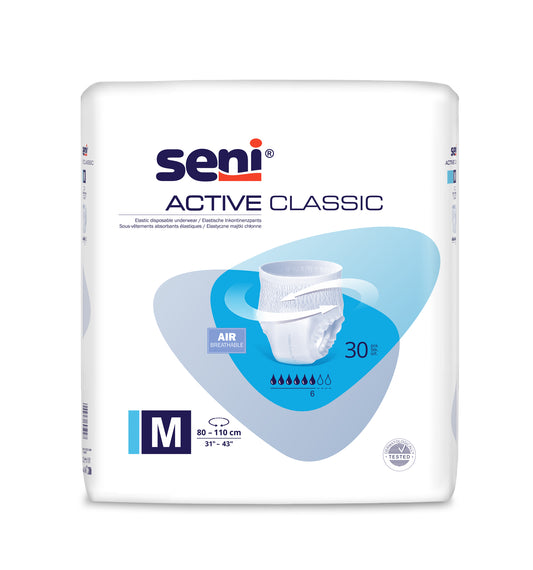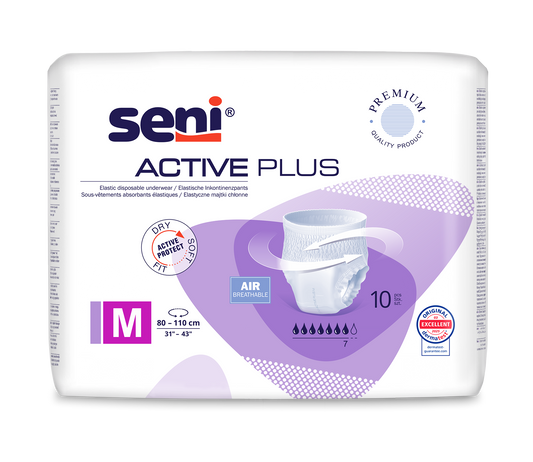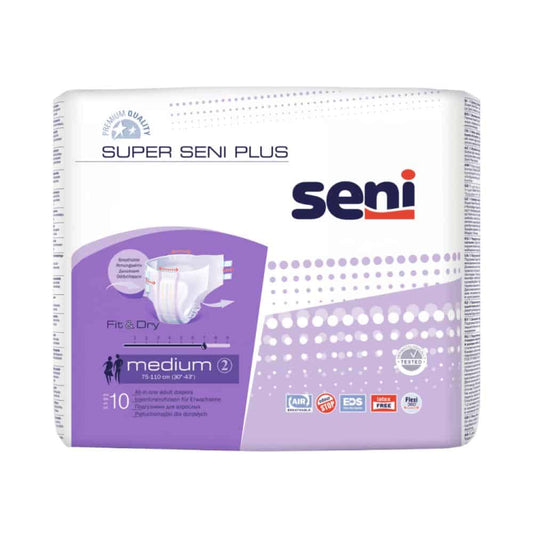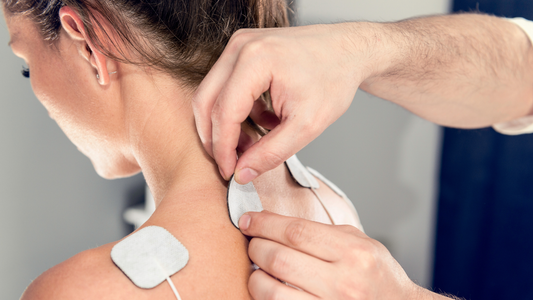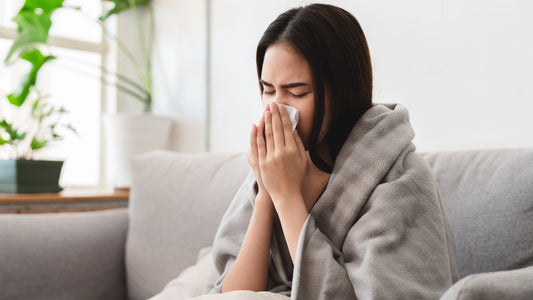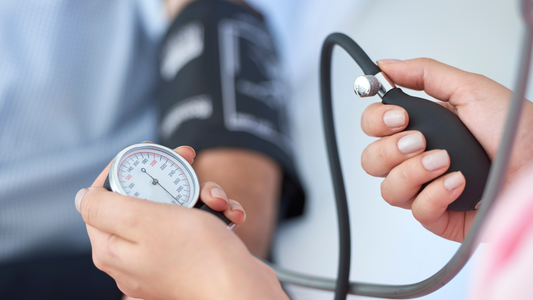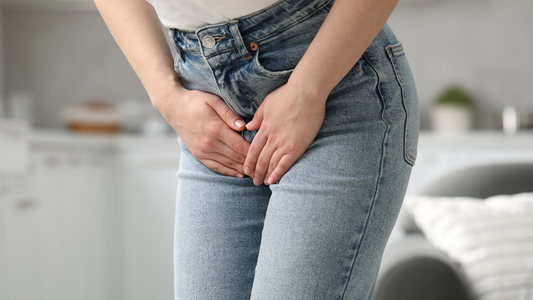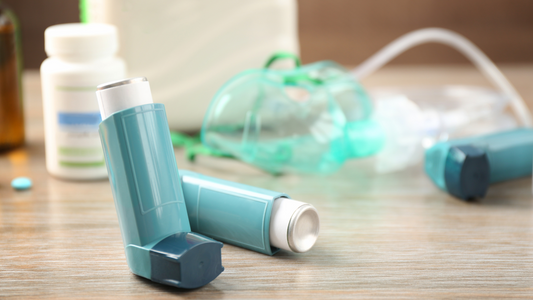
Understand and cope with the headache: a comprehensive guide to the headache day
On September 5, 2024, we commit the headache day to raise awareness of the many types of headaches and to illuminate their effects on the life of those affected. Headaches are one of the most common complaints worldwide and can occur in many forms and intensities that can severely affect the quality of life. In this detailed blog article we respond to the causes, types, symptoms and treatment options of headaches. We give tips on prevention, examine home remedies and alternative methods and explain how nutrition, stress and other factors can influence the development of headaches.
Why headaches are so much more than just a pain in the head
Headaches are not just an annoying evil - they are a complex challenge for healthcare and affect millions of people worldwide. The spectrum of headaches ranges from slight tension headaches to agonizing migraine attacks, and each kind has its own causes, symptoms and treatment options. But what are the specific features of the most common headache types and how can they be treated effectively?

The different types of headaches and their causes
Headaches can occur for a variety of reasons. Belonging to the most common species:
1. Tension headache: The silent companions in everyday life
Tension headaches are the most common form of headache. They are characterized by a dull, pressing pain, which is often described as a narrow ring around the head and can last a few minutes to several hours.
Causes of tension headache:
- Muscle tension in the neck, shoulder and head area.
- Stress and psychological stress.
- Lack of sleep or an irregular sleep rhythm.
- Bad posture through long screen work or unergonomic workplaces.
Treatment and prevention:
Over -the -counter pain relievers such as ibuprofen or paracetamol are suitable for treating tension headaches. But in the long term it is more important to tackle the causes, such as coping with stress through relaxation techniques, yoga or progressive muscle relaxation. Neck and shoulder exercises can loosen the muscles and reduce the likelihood of future headaches.
2. Migraines: a blow to the quality of life
Migraine is a neurological disease that is characterized by intensive, often one -sided headaches. This pain is pulsating and can go hand in hand with nausea, vomiting and sensitivity to light. Migraines can occur in episodes that take hours to days and is often very stressful for those affected.
Migraine symptoms:
- Strongly pulsating, mostly one -sided headache.
- Nausea and vomiting.
- Hypersensitivity to light, sounds or smells.
- In some cases, an aura occurs in which those affected experience visual or sensory changes before the headache phase.
Migraines trigger and causes:
- Genetic predisposition plays a major role.
- Hormonal changes, especially in women during menstruation, pregnancy or menopause.
- Certain foods such as chocolate, cheese or red wine.
- Stress, lack of sleep and changes in the daily rhythm.
- Swiss weather and changes in air pressure.
Migraine treatment and prophylaxis:
Migraines can be treated with specific drugs such as triptans that have a targeted effect against the migraine symptoms. To prevent migraine attacks, the avoidance of triggers, compliance with a regular sleep rhythm and the use of relaxation techniques can be helpful. Migraine prophylaxis with medication such as beta blockers or antidepressants can also make sense in severe cases.
3. Cluster headache: The most extreme pain you have ever experienced
Cluster headaches are considered one of the most painful headache types. They appear episodically in so -called "clusters", which can last for several weeks or months, followed by symptom -free phases. The pain is intense, one -sided and often concentrated around an eye or temple.
Cluster headache Symptoms:
- Very strong, stinging or burning pain around the eye, temple or forehead.
- Accompanying symptoms such as tearful eyes, a running or clogged nose and sweating in the face area.
- Affected people are often restless and are looking for relief through walking around.
Causes and treatment:
The exact causes of cluster headaches are not fully known, but one suspects a participation of the hypothalamus and genetic factors. The treatment includes the administration of oxygen, triptans and sometimes also lidocaine. Medicines such as Verapamil can be used preventively to reduce the duration and frequency of the episodes.
4. Chronic headache: an invisible enemy that never rests
Chronic headaches are defined as a headache that occurs over a period of at least three months over a period of more than 15 days a month. You can include any kind of headache, but the most common are chronic migraines and chronic tension headaches.
Causes of chronic headaches:
- Long -term medication, especially pain relievers, can lead to medication -induced headaches.
- Chronic stress, sleep disorders and an unhealthy lifestyle also contribute to chronification.
- Neurological diseases or structural changes in the brain.
Treatment and prevention:
Chronic headaches require a comprehensive diagnosis and individually coordinated mostly multimodal therapy. Treatment can be medication or non-drug, including behavior changes, stress management and sometimes cognitive behavioral therapy.

Special headaches and their special features
5. Headache in children
Headaches in children are often difficult to see because children cannot always clearly express their symptoms. Causes can be overload, dehydration, stress or screen work. Parents should pay attention to signs such as irritability, pallor or lack of concentration. Treatment should take place in consultation with a pediatrician and can include child -friendly pain relievers, sufficient fluid intake and regular breaks from the screen work.
6. Headache during pregnancy: a balancing act of the hormones
During pregnancy, headaches can occur more often, often due to hormone fluctuations, reduced fluid intake or lack of sleep. The treatment should be done without medication if possible. Instead, home remedies for headaches such as calm, sufficient fluid intake and easy movement can help. In the event of strong or persistent headache, a doctor should always be consulted to discuss safe treatment options.
7. Headache through screen work
Headaches through screen work are widespread and are often caused by eye loads, poor posture and muscle tension. Regular breaks, an ergonomic workplace and eye exercises can help reduce the stress. Drinking enough water and using screen glasses can also prevent headaches.

The invisible causes: what is really behind headaches?
Nutrition and headache: is your food the trigger?
Certain foods and drinks can trigger or reinforce headaches. The most common triggers include cheese, chocolate, red wine and caffeine. A nutrition diary can help identify and avoid individual triggers. An irregular food intake or leaving meals can lower blood sugar levels and trigger headaches. Food with a high content of sugar or artificial additives can cause headaches in sensitive people. A balanced diet with regular meals and sufficient fluid intake can help prevent headaches.
Hormones and headaches: the secret triggers in the body
- Hormone fluctuations, especially in women during the menstrual cycle, pregnancy or menopause, can trigger headaches or migraines. The intake of hormonal contraceptives can also affect headaches.
Stress and headache: the silent pest in the head
- Stress is a well -known trigger for headache and can trigger both tension headaches and migraines. Stress can increase the release of stress hormones such as cortisol, which lowers the pain threshold and can lead to headaches. By setting up tension in the neck and shoulder area, voltage head pain can also be triggered by stress.
Neck and headache: the invisible connection
- Neck pain and headache are often connected because muscle tension in the neck area can trigger headaches. A bad posture, long sitting at the desk or working on the computer are common causes.
Headache and change of weather: when the climate tortures the head
- A change in the weather can trigger headaches or migraines in some people. Changes in air pressure, temperature or humidity can influence the nervous system and increase headaches. A abrupt change in the weather conditions can affect the baroreceptors in the brain and in humans who are sensitive to the headache triggered. Adaptation to different temperatures or moisture levels can also play a role.
Treatment options and prevention: the way to relief
Medicine treatment: what really helps?
There are various medication for headaches that can be used depending on the type and intensity of the pain. This includes over -the -counter pain relievers such as ibuprofen and paracetamol as well as prescription drugs such as triptans for migraines and certain antidepressants for chronic headaches. Long -term taking pain relievers can lead to medication -induced headaches. It is important to limit the intake to medical advice and consider other treatment methods. A multimodal pain concept consisting of different disciplines is often necessary.

Alternative treatment methods and home remedies
Drink water
Explanation: Dehydration is a common cause of headaches, including tension headaches and migraines. The body needs sufficient fluid to support the normal function of the brain and nervous system.
Evidence-based mechanism of action: When the body is dehydrated, there is a reduction in blood volume, which leads to a reduced oxygen and nutrient supply of the brain. This can lead to headaches. Studies have shown that taking water in people who suffer from dehydration can cause a quick relief of the headache. A study in "Headache: The Journal of Head and Face Pain" (2015) found that increased water intake could significantly reduce the duration of the headache and intensity.
caffeine
Explanation: Caffeine can increase the effects of certain pain relievers and is contained in some over -the -counter headache. It can also alleviate headaches by narrowing the extended blood vessels in the brain associated with migraines.
Evidence -based mechanism of action: caffeine acts as a vasoconstrictor, so narrow the blood vessels, which can be helpful for migraines, since migraines are often connected to an extension of the blood vessels. Caffeine can also influence the pain receptors in the brain and the release of certain neurotransmitters, such as dopamine, promote what reduces pain sensation.
Ginger
Explanation: Ginger is known for its anti -inflammatory and antioxidant properties. It is traditionally used to treat nausea, which is often connected to migraines, and can also reduce the frequency and intensity of headaches.
Evidence -based mechanism of action: The active connections in ginger, such as Gingerol, have anti -inflammatory effects that can help reduce inflammation in the brain associated with migraines. A study in "Phytotherapy Research" (2014) showed that ginger powder in the treatment of migraines can be as effective as Sumatriptan (a frequently used migraine medication). Ginger also inhibits the synthesis of prostaglandins, these are tissue hormones that are involved in the development of pain and inflammation.
Peppermint oil
Explanation: Peppermint oil has a cooling effect and can improve blood circulation. It is often used to relieve tension headaches by relaxing the muscles and reducing the sensation of pain.
Evidence -based mechanism of action: peppermint oil contains menthol, which has a cooling effect on the skin and can block the pain receptors. It is assumed that menthol improves blood circulation and reduces muscle tension, which is helpful for voltage head pain. A study in "Phytomedicine" found that 10% peppermint oil, which is applied to the forehead and the temples, has a similar effect to paracetamol to relieve tension headaches. It was also shown that it increases the pain tolerance by reducing the irritation of the trigeminal nerves involved in the pain line.
Hot cold therapy
Explanation: The use of cold can alleviate headaches by narrowing the blood vessels and stunning the nerve endings. Heat applications can help solve muscle tension that cause tension headache.
Evidence -based mechanism of action: cold therapy in particular Cooling pads Lit through vasoconstriction, i.e. the narrowing of the blood vessels and inhibition of neurogenic inflammation. These processes can reduce the release of inflammatory substances and interrupt the pain line. A study in "Headache: The Journal of Head and Face Pain" (2006) showed that the use of a cold compress in the neck area can significantly alleviate migraine symptoms. On the other hand, heat increases blood circulation and reduces muscle tension, which can help with tension headaches. A study in "Pain Research & Management" (2013) reported that Thermal therapies Effectively reduce the perception of pain in tension headaches.
Relaxation techniques
Explanation: Stress is a common cause of tension headaches and migraines. Relaxation techniques such as breathing exercises, meditation and yoga can help to reduce stress and reduce the frequency of headache.
Evidence -based mechanism of action: Relaxation techniques work by regulating the autonomous nervous system and reducing the release of stress hormones such as cortisol that can trigger headaches. These techniques can also reduce the tension in the muscles, which often leads to tension headaches. A meta-analysis in "Headache" (2015) found that relaxation techniques can significantly reduce the severe and frequency of tension headaches.
Low -stimulus and low -light surroundings
Explanation: Migraine patients are often sensitive to light and noise. A dark, quiet room can help minimize stimuli and relieve the headache.
Evidence -based mechanism of action: The reduction of sensory stimuli such as light and noise can reduce the activity in the brain, especially in the areas that are responsible for the processing of sensory information. This relief can alleviate migraine symptoms. A study in "Cephalalgia" (2009) showed that reducing light and noise can reduce the pain intensity and duration of migraine attacks.
magnesium
Explanation: Magnesium is a mineral that is involved in many physiological processes. A magnesium deficiency is often associated with migraines, and taking magnesium can help prevent migraine attacks.
Evidence -based mechanism of action: Magnesium plays a role in the nerve line and vascular regulation. It is believed that magnesium has a neuroprotective effect and reduces the neuronal overweakability that migraines can trigger. A study in "Headache" (2001) found that daily taking magnesium preparations can reduce the frequency of migraine attacks by up to 41%. Magnesium also stabilizes the cell membranes and has an anti -inflammatory effect, which can further reduce the frequency of migraines.
Lavender oil
Explanation: Lavender oil has calming and anxiolytic properties that can help to reduce stress and relieve tension headaches.
Evidence -based mechanism of action: Lavender oil acts through the modulation of the parasympathetic nervous system, which lowers heart rate and blood pressure and reduces the stress level. It has been shown that lavender oil increases the GABA activity (gamma amino acid) in the brain, which has a calming effect. A study in "European Neurology" (2012) showed that the inhalation of lavender oil can significantly reduce the severity of migraine attacks.
Sleep and calm
Explanation: Lack of sleep or irregular sleep are common triggers for headaches, especially for migraines and tension headaches. Sufficient sleep is important for relaxation and balance of the nervous system.
Evidence -based mechanism of action: Sleep is crucial for the regeneration of the central nervous system and the regulation of neurotransmitters such as serotonin and dopamine that influence pain. A lack of sleep can lead to an over -the -controllability of the nerve pathways that can trigger headaches. A study in "Headache: The Journal of Head and Face Pain" (2010) showed that regular sleep routine and sufficient sleep can reduce migraine attacks.
These home remedies and their mechanisms of action are supported by scientific studies and offer effective, natural ways to relieve headaches.
The influence of everyday life: when and why strike a headache
Headache when waking up: a bad start to the day
Headaches when waking up can have different causes, including sleep apnea, poor sleep or sleeping position. You can also point out teeth or high blood pressure.
Treatment and prevention:
Good sleep hygiene should be observed to avoid this type of headache. This means going to bed and getting up regularly at the same time, making the sleeping environment pleasant and avoiding stress before going to bed.
Headache after sport: when movement hurts
Although sport is often advertised as a cure for a headache, intensive training units or incorrect posture can trigger headaches themselves during training. This can be done by overexertion, dehydration or lack of oxygen supply.
Treatment and prevention:
It is important to drink enough water during sport, to avoid overexertion and use the right technology. Stretching exercises and an appropriate warm-up and cooling phase can help prevent headaches after exercising.
 Effects of headaches on mental health
Effects of headaches on mental health
- Stress and fear: recurring headache, especially migraines and chronic tension headaches, can lead to a constant feeling of stress and fear. People often worry about the next pain episode, which leads to a continuing feeling of uncertainty and fear. This fear can increase stress and thus increase the frequency and intensity of the headache, which can lead to a vicious circle.
- Depression and isolation: Chronic headaches are often associated with depression. The constant experience of pain can significantly affect general well -being and joie de vivre. Those affected can withdraw socially, avoid activities they used to enjoy and develop a feeling of hopelessness. Studies have shown that migraine patients have an increased risk of depression and anxiety disorders.
- Impaired cognitive function: headache, especially migraines, can affect cognitive function. Affected people often report difficulties in concentration, memory problems and a general "brain fog" feeling. These cognitive impairments can affect performance at work or at school and reduce self -esteem.
- Sleep disorders: Headache can affect both sleep quality and the sleeping time. People with frequent headaches often report on insomnia or non -relaxing sleep, which leads to increased tiredness, irritability and further deterioration in mental health. Sleep disorders can also increase the susceptibility to headaches, which increases the vicious circle of pain.
- Reduced self -esteem and loss of control: Headaches can cause those affected to feel powerless and have the feeling that they have lost control of their lives. The constant awareness of the possibility of a pain can increase the feeling that you have no control over your own body, which can affect self -esteem.
Call to self -care
The headache day 2024 is a memory that we have to make ourselves a priority. It is time to take our health seriously, to identify the triggers and to regain control of our well -being. Because only through the combination of knowledge, prevention and modern medicine can we gain the fight against headaches and lead a healthier, more fulfilling life.
Captivating knowledge and brave steps to change are necessary to achieve a life free of headache. Because in the modern world, in which stress and imbalance are often the norm, attention to our health is not only desirable, but indispensable. It is time that we make ourselves a priority and not only treat the pain, but also fight the real cause - for a more fulfilling, healthier life.

Positions and contacts for various headaches
If you suffer from different types of headaches, it is important to know the right points of contact and contact person in order to obtain a suitable diagnosis and treatment. Here are the most important contact points and contacts who can help you deal with your headache:
| Contact point | Description |
|---|---|
| Family doctor / general practitioner | First point of contact for the diagnosis and treatment of general headaches. Transfer to specialists if necessary. |
| neurologist | Specialized in migraines, cluster headaches and complex headache types. Offers extended diagnostics and specific treatments. |
| Headache centers / clinics | Offers comprehensive support from an interdisciplinary team for complex and chronic headaches. |
| Pain therapist | Specializes in the treatment of chronic headaches with multimodal approaches. |
| Ophthalmologist / ENT doctor | Treats headache caused by visual problems (ophthalmologist) or ENT problems such as sinusitis (ENT doctor). |
| Psychologist / psychotherapist | Helps with a headache in connection with stress, fear or depression. Offers behavioral therapy and coping with stress. |
| Physiotherapist | Treats tension headache and headache through muscle tension or poor posture. Offers targeted exercises. |
| Nutritionist | Develop nutrition plans for the prevention of headaches caused by nutritional factors or intolerances. |

